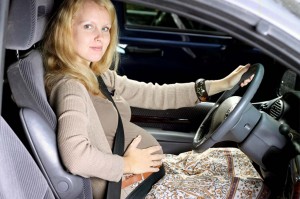
A woman's risk of getting into a multi-car crash increases significantly during the second trimester of a pregnancy, according to a new study.
Among the many risks associated with pregnancy, a new Canadian study adds another one: an increase in multi-car accidents.
A research team led by the University of Toronto found that the odds of being involved in a multi-vehicle accident severe enough to lead to an emergency room visit increased by 42% compared to what the same woman might have experienced during the three years before becoming pregnant.
But the report, published by the Canadian Medical Association Journal, found that the risk of such a crash dipped sharply during the third trimester and after a woman gives birth.
According to Dr. Donald Redelmeir, the University of Toronto researcher who led the study, the average woman has a 1 in 50 risk of a motor vehicle crash during pregnancy.
The study focused 500,000 women in Ontario who gave birth between 2006 and 2011, examining their driving records over a lengthy period – from three years before pregnancy until a year after birth. The study found that, on the whole, the group experienced a collective 6,922 crashes, or 4.55 per 1,000 women annually, more than double the rate of the Ontario population on the whole.
(What’s the Road Rage Capital of the country? Click Here to find out.)
During the first trimester of pregnancy, the study found a small – but statistically insignificant decline in the accident rate. But as soon as the women entered the second trimester, the figures soared, the entire three-month period seeing an average 6.47 crashes per 1,000, or more than triple the overall crash rate for Ontario.
The study attempted to isolate specific risk factors, such as age and household income, even the sex of their babies. The only factor that showed a statistical impact was where the women lived, with a higher crash rate for those living in cities where there is more traffic – and potential distractions.
Curiously, the risk of getting involved in a multi-car accident started to plunge as they entered their third trimester, with the safest period found to be during the final month before delivery, when the crash rate fell by more than half, to just 2.74 per 1,000 women. And during the year after delivery, the accident rate further declined to 2.35 per 1,000 women.
(Feds want to force change to safety culture at GM. Click Herefor the story.)
The study may have actually underestimated the problem as it did not include women who experienced a crash severe enough to kill their fetus. But prior studies have revealed that car accidents were the number one factor behind the trauma death of a fetus.
“The message here is not to stop driving,” said Redelmeier, a staff physician at Toronto’s Sunnybrook Health Sciences Centre. “The message is to start driving more carefully.”
